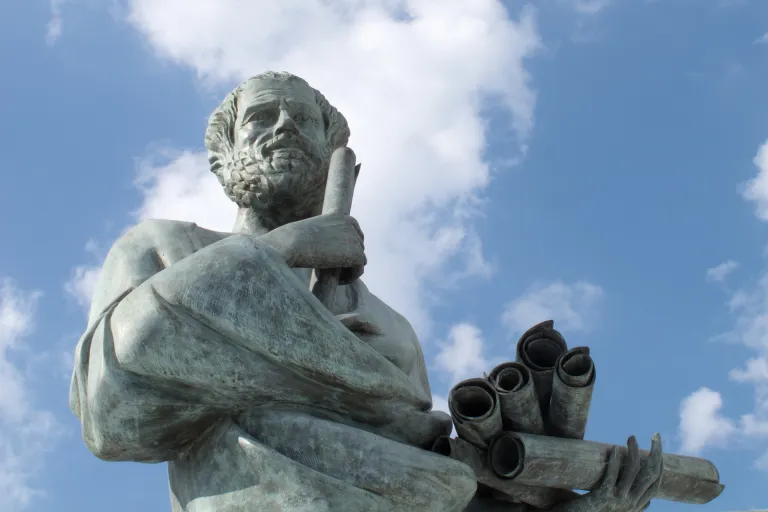Meditating your way to the top
This article is adapted from a talk I gave at the Society of Women Engineers Annual Conference in Austin – I was thrilled when SWE accepted my submission, as I’m working more in bringing together my various and seemingly contrasting worlds of yoga and engineering. To put it simply, the benefits of yoga, mindfulness, and meditation are far reaching, and by getting “on the mat” it’s not long before you start to see the impacts off the mat. Read on for how the benefits of meditation tie up to the characteristics of great leaders.
Some of you may be interested in meditation and mindfulness, but most, perhaps, are more interested in getting “to the top”, but what is “the top” exactly? The world’s best leaders – these people seem to be infallible – strong yet supportive, intelligent yet empathetic; super heroes. Well I believe you have super powers too, you just need help accessing them.
Some background: I’ve been an engineer by profession for six years – and an engineer in other ways most of my life. Yoga came later; when I was on site in Australia in 2015 I started teaching “unofficial” yoga classes to help my colleagues unwind, and in 2016 I “officially” completed yoga teacher training, began teaching, and in 2017 held my first retreat. Surprisingly, yoga teacher training is less about the physical yoga practice, and more about taking a deep dive into yourself, figuring out what makes you tick, what you live for.
During that process, I felt a lot of inner conflict around in my place this new world – yoga world – and my logical, rational, physical, scientific, engineering world. I loved both worlds, but couldn’t yet see the intersections between them. But then, I started to feel them – I experienced first-hand the benefits yoga and meditation has had on my personal life, professional life, and as a leader.
What makes a great leader?
Rosalinde Torres of BGC researched hundreds of leaders like Nelson Mandela, to distil characteristics of thriving 21st century leaders: these people shaped their future, rather than reacting to it; intentionally connected to a diverse network, and were courageous enough to dare to be different (1). Catalyst, a leading Workplace Inclusion research organization, determined from research across six countries that successful leaders cultivated sense of belonging without compromising uniqueness, through four characteristics – Empowerment, Humility, Courage, and Accountability (2). Covey’s 7 Habits for Highly Effective People – arguably the most famous leadership and self-development book – are Be Proactive, Begin with the End in Mind, Put First Things First, Think Win/Win, Seek First to Understand, Then to Be Understood, Synergize, and Sharpen the Saw (3).
Looking at these traits, it seems that what separates the good from the great leaders is that they start from an innate understanding of themselves; WHO they are – outside of any external factors, and WHY they do what they do, only then do those leaders think about what they are going to do and how they will do it.
If fact, if you remember how Covey’s structured his 7 habits, it started with “manage yourself”, then “lead others” and finally, “unleash potential”.
Great leaders lead with purpose, from the inside-out, they lead from within.
Leading from Within
For me, “Leading from Within” incorporates:
- Awareness – understanding of what makes you tick, and why;
- Reflection – dedication to how can you do better;
- Resilience – using a firm grounding in WHO you are to respond, instead of react, to external impulses.
- Service – because without a direction, self-awareness is pretty much self-centered-ness.
Leading from Within is not a new subject. Socrates, who was hanging around Athens about two and a half thousand years ago, said “Let him that would move the world first move himself”.
There’s a reason for that. There’s also a reason why meditation – where earliest written records from Hindu traditions date back to around 1500 BCE (that’s another thousand years before our friend Socrates) – has not gone away. To put it technically, this shit works.

Seems like this guy was on to something.
Meditation and its benefits
To understand what meditation is, you really need to try it. Try this short exercise and read on:
Sit up tall in your seat and close your eyes (I mean, read this first). To start, just notice the sounds in the room around you, notice the sound of your neighbour, notice the sound of your own breath, feel your feet planted on the floor, feel your breath moving in and out of your body. Allow everything else to melt away except for the sound of your breath. Count 10 breaths, then take a deep breath in, and sigh it out. Feel your feet on the floor, and come back to the room around you – blink open your eyes.
We hear all the time that meditation reduces stress – but I think it’s a kind of superficial layer to the benefits. “Stress” is a symptom of a deeper disconnect, and what meditation starts to get to is that deeper layer. What you just did has been shown to improve (among other things) emotional intelligence, self-observation, objectivity, focus.
Let’s talk about those –
- Emotional intelligence – It seems simple, but real-time awareness of what you’re feeling (and sometimes the perspective on why) does not come naturally to us. In meditation, you practice observing emotions and sensations that come up, and develop an innate understanding of yourself and what makes you tick.
- Introspection is an integral part of mediation tradition. It’s known as Svadhyaya in the yoga Niyamas – almost like commandments of yoga. This action is about quietly looking at your actions, thoughts, motivations, desires and needs in pursuit of a deeper experience of our lives. It’s reflecting, without judgement, on what you have done, and what you could do.
- Objectivity or resilience – For me this is all about creating space between an impulse and a reaction, and in that space, you can recognize when something is out of your control or not important in the grand scheme of things, and choose which path to take. This isn’t just emotional – the ability to respond, instead of react, to external factors that trigger you. It’s physical too – neuroscientist Dr Richard Davidson found that meditation actually improved participant’s immune response to an influenza.
- Focus. This is one we hear all the time, and there’s many elements to focus. Meditation can help you to focus on a task – improve your ability to concentrate and pay attention. Meditation can help you to focus on yourself – who you are, and why you do what you do. And finally, meditation can help you to focus on people – being present to who you’re with, and serving who you’re with.
It doesn’t stop there. Meditation also improves compassion, creativity, happiness, contentment, energy. Imagine a leader with all those qualities, better yet, imagine a life with all those qualities. Imagine your life with all those qualities.
The Science
These changes are not just emotional. Studies have shown physiological changes in our brain structure because of mediation.
Sara Lazar of Harvard University did one such study, and showed increased gray matter in the part of the brain (left hippocampus) which assists learning, memory, and emotional regulation; the part (temporo-parietal junction) important for perspective taking, empathy and compassion; and yes, a decrease in the amygdala – which controls fight or flight – or stress. Their environments hadn’t changed, but their reactions to their environments had.

Lazar’s study is among many that have shown physiological changes in brain structure with meditation.
| Traits of great leaders | Benefits of meditation |
| Emotional Intelligence | Awareness |
| Self-Observation | Reflection |
| Objectivity | Resilience |
| Focus | Service |
Tools to help you start meditating
For me, guided meditation really helped to develop a routine and regular practice, apps like Headspace are perfect for that.
There’s lots of ways to incorporate mediation and mindfulness into your life – from eating, to walking, to driving, even running or playing sport. Thich Nhat Hanh is a Buddhist monk and famous teacher of walking meditation, he says “Many of us walk for the sole purpose of getting from one place to another. Now suppose we are walking to a sacred place. We would walk quietly and take each gentle step with reverence. I propose that we walk this way every time we walk on the earth.” – whether it’s a meeting with a friend or the bathroom, all of us can bring mindfulness to each step we take to reap the benefits of meditation.
One of the best and simplest ways to start is to spend a few moments every day just focusing on your breath, and remember to treat your mind as you would a puppy; when it wanders, and it will wander, bring it back gently, lovingly, and try again.
Meditation will look different to different people, and to bring it in to your life, you just need to find that place where you can pay attention, on purpose, in the present moment, non-judgementally (5).
Perhaps you started this article with the intent to “meditate your way to the top” – but incorporate meditation into your life, and you might just realize, you’re already there.
P.S. To try a meditation now, check out my free Yoga Nidra audio over on my facebook page: https://www.facebook.com/lauraclaireyoga/videos/1957817314499215/
References
Torres, R. (2014). Rosalinde Torres: What it takes to be a great leader [Video file]. Retrieved from https://www.ted.com/talks/roselinde_torres_what_it_takes_to_be_a_great_leader
Prime, Jeanine and Elizabeth R. Salib (2014). Inclusive Leadership: The View From Six Countries. New York: Catalyst. http://www.catalyst.org/knowledge/inclusive-leadership-view-six-countries
Covey, S. R. (2004). The 7 habits of highly effective people: Restoring the character ethic ([Rev. ed.].). New York: Free Press.
Hölzel B. K., Carmody J., Vangel M., Congleton C., Yerramsetti S. M., Gard T., Lazar S. W. (2011). Mindfulness practice leads to increases in regional brain gray matter density. Psychiatry Res. 191, 36–43. [PMC free article]
Quote from Jon Kabat-Zinn – who brought mindfulness to modern medicine; In 1979, Jon Kabat-Zinn recruited chronically ill patients not responding well to traditional treatments to participate in his newly formed eight-week stress-reduction program, which we now call Mindfulness-Based Stress Reduction (MBSR).